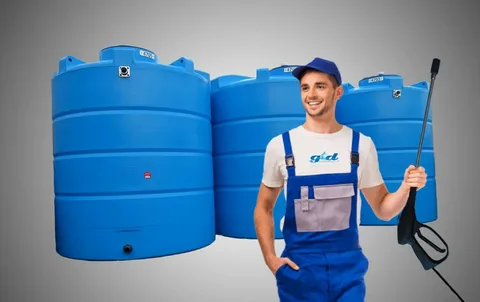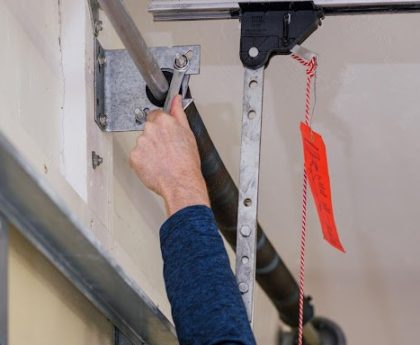Maintaining a clean water tank is essential for ensuring the hygiene and safety of the water supply in homes, businesses, and industries. Contaminated water tanks can harbor bacteria, algae, and other harmful microorganisms, leading to waterborne diseases and unpleasant odors. This comprehensive guide will help you understand the importance of water tank cleaning, the steps involved, and best practices to ensure your water remains clean and safe.
1. Importance of Water Tank Cleaning
Health and Safety
The primary reason for regular Water Tank Cleaning is to safeguard health and safety. Over time, sediments, algae, and bacteria can accumulate in the tank, contaminating the water supply. Consuming or using this contaminated water can lead to serious health issues such as gastrointestinal diseases, skin infections, and other illnesses.
Quality of Water
Regular cleaning helps maintain the quality of water. Clean water tanks prevent unpleasant odors, tastes, and discoloration in the water. This is particularly important for households and businesses that rely on water for drinking, cooking, and cleaning.
Longevity of the Water Tank
Maintaining a clean water tank can also prolong the lifespan of the tank itself. Accumulation of sediments and other contaminants can cause corrosion and damage to the tank material, leading to leaks and the need for costly repairs or replacements.
2. Frequency of Water Tank Cleaning
Residential Tanks
For residential water tanks, it is generally recommended to clean them at least once a year. However, if the water source is prone to contamination or the tank is exposed to external elements, more frequent cleaning may be necessary.
Commercial and Industrial Tanks
Commercial and industrial water tanks should be cleaned more frequently, ideally every three to six months, due to higher water usage and greater risk of contamination.
3. Steps Involved in Water Tank Cleaning
Preparation
Turn Off the Water Supply: Ensure the water supply to the tank is turned off to prevent any refilling during the cleaning process.
Drain the Tank: Completely drain the water from the tank. This can be done using the outlet valve or a pump.
Inspect the Tank: Before cleaning, inspect the tank for any visible signs of damage, corrosion, or significant contamination.
Cleaning Process
Scrubbing: Use a long-handled brush or a high-pressure jet to scrub the interior walls and floor of the tank. This helps remove algae, sediments, and other contaminants. Be sure to reach all corners and crevices.
Using Cleaning Agents: For a more thorough cleaning, use a mild detergent or a specialized tank cleaning solution. Make sure the cleaning agent is safe for use in water tanks and does not leave harmful residues.
Rinsing: After scrubbing, thoroughly rinse the tank with clean water to remove any cleaning agents and loosened debris. Repeat this process until the water runs clear.
Disinfection
Chlorination: Disinfect the tank by adding a chlorine solution. A common ratio is 50-100 ppm of chlorine. Fill the tank with water and allow the chlorine solution to sit for several hours or overnight.
Final Rinse: Drain the chlorinated water and thoroughly rinse the tank with clean water to remove any residual chlorine before refilling it with fresh water.
4. Best Practices for Maintaining a Clean Water Tank
Regular Inspections
Conduct regular inspections of your water tank to check for signs of contamination, damage, or wear. Early detection of issues can prevent more serious problems and ensure the continued supply of clean water.
Use of Quality Materials
Ensure that your water tank and its components are made from high-quality, food-grade materials. This reduces the risk of contamination and extends the lifespan of the tank.
Proper Ventilation
Maintain proper ventilation for your water tank to prevent the growth of algae and bacteria. Ensure that all openings are covered with fine mesh screens to keep out insects and debris.
Water Source Protection
Protect your water source from contamination. Ensure that the area around your water tank is clean and free from potential sources of pollution, such as garbage or chemicals.
Professional Cleaning Services
Consider hiring professional cleaning services for your water tank. Professionals have the expertise, equipment, and cleaning agents to thoroughly clean and disinfect water tanks, ensuring the highest standards of hygiene.
Conclusion
Maintaining hygiene with regular Water Tank Cleaning Services is crucial for ensuring the health and safety of your water supply. By following the steps outlined in this guide and adhering to best practices, you can ensure that your water tank remains clean, safe, and in good condition. Regular inspections, proper cleaning techniques, and the use of quality materials will help you maintain the quality of your water and the longevity of your tank.
For Read More Informative Blogs Click Here …





